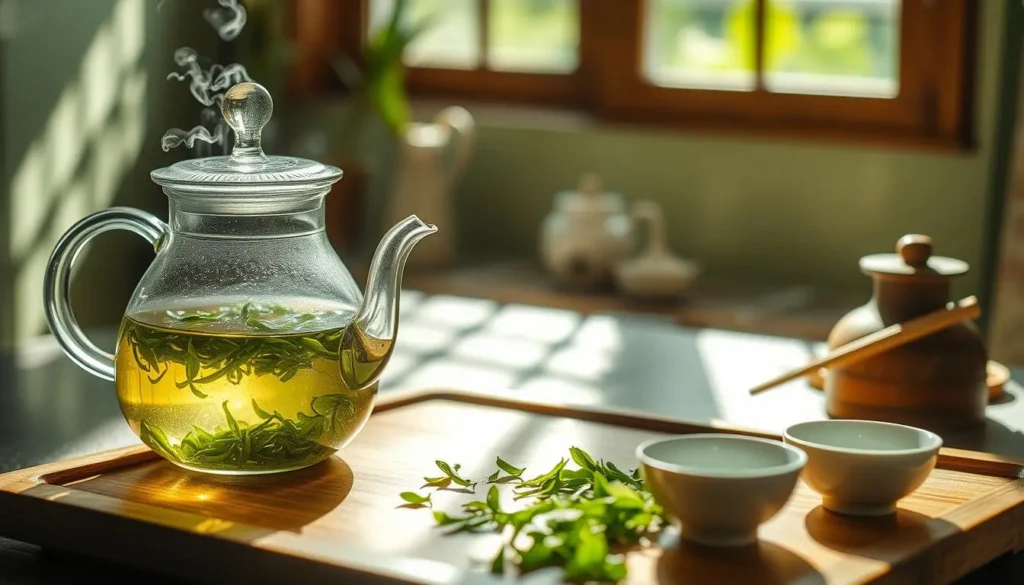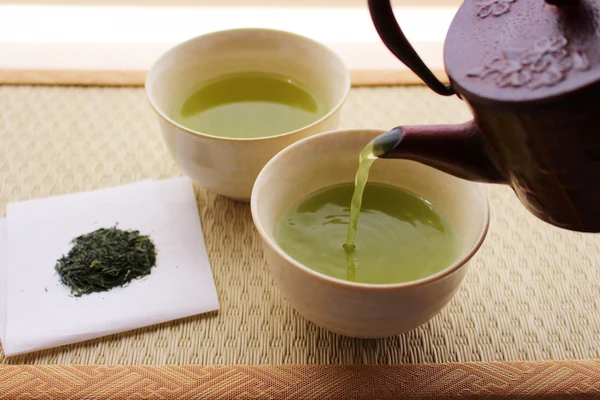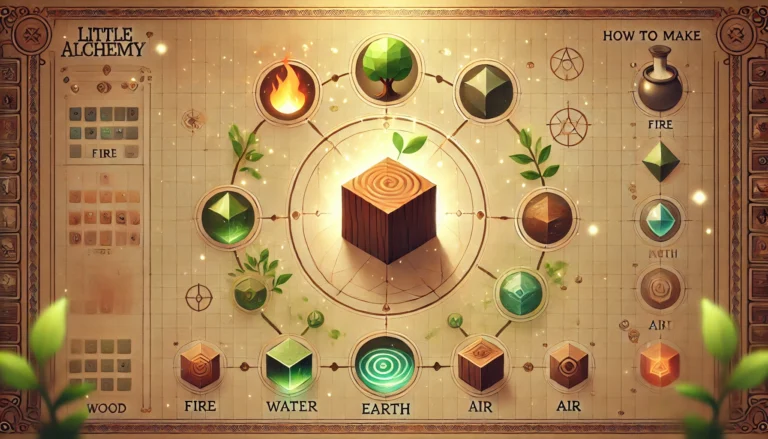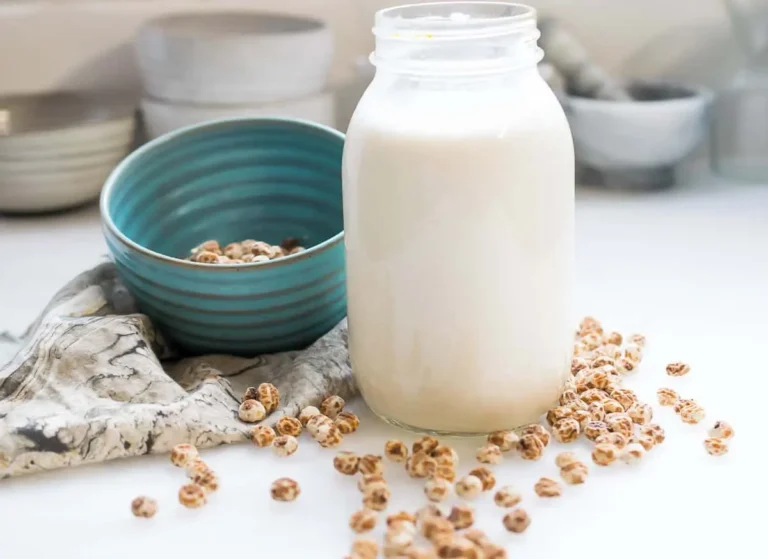Green tea is a health power source that includes antioxidants and multiple beneficial compounds. You can also learn how to make green tea with our complete guide! Discover the best techniques, tips, and common mistakes to avoid for the perfect cup every time. to its popularity as a beverage. The method of brewing ideal green tea drinks is a capability that anyone can learn to perfect, no matter why they drink it. This complete guide explores all vital information for preparing a flawless tea beverage, including both proper tea pick selection and ideal brewing technique selection.
The Power of Green Tea: Why It’s Worth Brewing
People have valued green tea because of its wide range of health advantages for a long time. Polyphenols with catechins act as antioxidants in green tea while they fight inflammation and enhance heart health and metabolic processes. Recent research indicates that daily green tea intake minimizes the risk of developing particular forms of cancer and enhances mental operations. Individuals can enjoy green tea, regardless of the time of day, since it comes with low calories and is served well, both hot and cold. The process of understanding how to make green tea requires maintaining beneficial health components while achieving excellent taste quality. Let’s delve in!
Types of Green Tea: Which One to Choose?
Green tea selection begins prior to brewing by deciding on the flavour that pleases your palate. Green tea exists in multiple variants, each displaying different characteristics of taste and smell and providing specific health benefits to consumers.
Loose Leaf vs. Tea Bags
The main distinction between loose-leaf green tea and tea bags is in relation to their sensory characteristics. Fractured tea leaves maintain fresh taste qualities with complex flavours since they exist naturally without compression in bags. Using tea bags brings convenience yet leads to inferior quality tea because they contain powdered tea leaves and broken tea pieces that create a subdued taste. Stay with us for a better understanding of how to make green tea!
Popular Green Tea Varieties
The type of tea you select for making green tea matters significantly since it determines the outcome. Thus, you must choose one that matches your taste preferences.
- Sencha: Japanese people prefer delicate grassy Sencha green tea over all others due to its mild, sweet notes at the finish.
- Matcha: This product consists of finely ground green tea from shaded-grown leaves. Green tea retains a deep umami taste, which people usually prepare during traditional tea rituals.
- Jasmine Green Tea: Tea drinkers relish its flowery, delicate composition, which acquires its smell from jasmine flowers.
- Dragon Well (Longjing): This green tea variety from China provides a pleasant nutty flavor and mellow taste that some people describe as butter, along with a smooth aftertaste.

The Right Tools and Ingredients: What You’ll Need
The fundamental preparation for how to make green tea requires both proper tools and ingredients as the first step. The correct tools and ingredients enable tea to keep its fresh taste while providing an optimal tea experience. Using appropriate tools, selecting premium tea leaves, and maintaining an ideal water temperature are crucial for producing a perfect green tea beverage that gives a pleasant drinking experience.
Green Tea Leaves or Tea Bags: The basic toolkit required for green tea includes loose-leaf tea and high-quality tea bags. The best taste comes from fresh tea, which you should purchase from a reliable supplier.
Hot Water: Green tea requires a water temperature below the boiling point for brewing. Using boiling water will produce bitter-tasting tea and break down its acceptable compounds.
Teapot or Cup: When preparing loose-leaf tea, a teapot with an internal strainer delivers the best results. A tea infuser or direct steeping of the tea inside your cup works equally well as alternative methods.
Tea Spoon: A teaspoon or a dedicated measuring spoon for tea is helpful when measuring out the right amount of leaves.
Step-by-Step Guide to Brewing Green Tea Like a Pro
To learn how to make green tea perfectly every time, you must master the art of preparation techniques. Focusing on important factors, including steeping temperature, duration, and tea quality, will allow you to enjoy the full features of your relaxing tea beverage. Following these easy steps will allow you to serve yourself a refreshing cup of green tea with all its nutritional value, just like an expert tea maker.
Boil Water to the Right Temperature
Water temperature is crucial when making green tea. While black tea requires boiling water (100°C or 212°F), green tea needs a much lower temperature to avoid bitterness. Ideally, water should be heated to 70°C to 80°C (158°F to 176°F). If you don’t have a thermometer, simply bring the water to a boil and then let it cool down for a minute or two before using it.
See The Benefits & Measure Your Tea
The general rule of thumb is to use about one teaspoon of loose-leaf tea for every 6 ounces of water. If you’re using tea bags, one bag will suffice for a cup. Feel free to adjust the quantity based on your taste preferences. For a stronger cup, increase the tea quantity slightly.
Learn How To Steep Your Tea
Once your water is at the correct temperature, pour it over the tea leaves or tea bag. The steeping time for green tea is crucial—too long, and it can become bitter; too short, and you won’t extract the full flavor. For more information about how to make green tea, the ideal steeping time is between 2 and 3 minutes. For lighter teas like Sencha, 2 minutes is perfect, while more robust teas like Dragon Well can handle up to 3 minutes.
Unlock How To Make Green Tea Also, Stir and Serve
After the tea has steeped, stir it gently to ensure an even distribution of flavor. If you use loose-leaf tea, strain the leaves or remove the tea infuser. Now, it’s time to enjoy your perfectly brewed green tea!
Common Mistakes to Avoid When Brewing Green Tea
Even though green tea is simple to brew, small mistakes can easily ruin the taste and quality of your cup. From using water that’s too hot to overstepping, these missteps can make your tea bitter or dull. By avoiding these common pitfalls, you’ll be able to enjoy a fresh, vibrant, and perfectly brewed cup every time!
Using Water, That’s Too Hot
One of the biggest mistakes while learning how to make green tea people make when brewing green tea is using water that’s too hot. High water temperatures can cause the tea to become overly bitter and astringent. Remember, water for green tea should be below boiling point, around 70°C to 80°C (158°F to 176°F).
Oversteeping the Tea
Green tea is delicate, and oversteeping it can lead to an unpleasant taste. The steeping time should never exceed 3 minutes. If you prefer a stronger cup, you can add more tea leaves rather than extending the steeping time.
Using Low-Quality Tea
While tea bags may be convenient, they often contain lower-quality tea leaves, which can result in a lackluster cup of green tea. Whenever possible, opt for loose-leaf tea for the best taste and aroma.
Not Straining the Tea Properly
If you’re using loose-leaf tea, strain the leaves before drinking. The last thing you want is to sip on a cup filled with stray tea leaves.
Tips for Enhancing Your Green Tea Experience
Once you’ve mastered the art of brewing, it’s time to get creative and experiment with ways to enhance the flavor by knowing how to make green tea. Whether you’re adding a touch of sweetness, infusing it with fresh herbs, or even chilling it for a refreshing iced version, there are countless ways to customize your tea and make it uniquely yours. Let your taste buds explore new possibilities with these simple yet delightful additions!
Add Sweeteners or Flavors
If you find green tea too bitter, consider adding honey, agave syrup, or stevia. For a refreshing twist, squeeze a slice of lemon into your cup. Some people even enjoy adding fresh mint leaves for a fragrant and cooling touch.
Try Cold Brew Green Tea
Cold-brewed green tea is a great alternative if you prefer your tea chilled. To make cold-brewed green tea, simply add your tea leaves to cold water and let it steep in the fridge for 6-8 hours or overnight. The result is a smooth, less bitter flavor that’s perfect for hot summer days.
Use Green Tea in Recipes
Green tea is incredibly versatile, and it can be used in a variety of recipes. Try adding matcha to smoothies, baked goods, or even ice cream. Green tea adds a unique, earthy flavor to desserts that’s hard to beat.
Storing Green Tea Properly
To ensure your green tea stays fresh, it’s essential to store it properly. Green tea is best kept in an airtight container away from heat, light, and humidity. If you’re using loose-leaf tea, a sealed tin or glass jar is ideal. Avoid storing tea near strong-smelling foods, as green tea can easily absorb odors.
Frequently Asked Questions
Can I Reuse Green Tea Leaves?
Yes, you can reuse loose-leaf tea for a second or third step, but the flavor will be milder each time.
What Is The Best Green Tea For Beginners?
Sencha or Jasmine green tea are excellent choices for beginners due to their mild and pleasant flavors.
Can I Drink Green Tea Every Day?
Yes, green tea is packed with health benefits, and drinking it daily is generally safe, but it’s best to limit intake to 3-4 cups a day.
Conclusion
Now that you’ve mastered the art of how to make green tea, it’s time to savor the full benefits of this rejuvenating beverage. From enhancing your energy levels to providing a refreshing moment of relaxation, a perfectly brewed cup of green tea is more than just a drink—it’s an experience. Whether you prefer it hot, chilled, or infused with flavors, the possibilities are endless. So, go ahead, explore different green tea varieties, experiment with steeping times, and make it your own. With each cup, you’ll unlock more of its rich taste and health benefits, ensuring a truly satisfying tea ritual!



